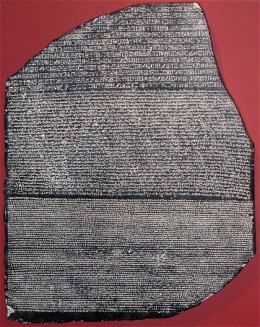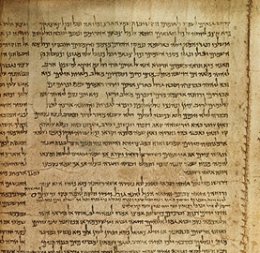Ten Discoveries That Rewrote History
<http://www.oculture.com/2007/09/ten_discoveries_that_rewrote_history.html>
| Category: History <http://www.oculture.com/category/history>, Books
<http://www.oculture.com/category/books> *|* |
Here are a few facts to know about the adventurous Patrick Hunt
<http://www.stanford.edu/dept/classics/home/community/faculty/Hunt.html>.
He's a Stanford archaeologist who has spent more than a decade trying to
unravel the mystery of how Hannibal, the great ancient military leader,
crossed the Alps in 218 BCE with 25,000 men and 37 elephants. (Listen on
iTunes to the course
<http://deimos3.apple.com/WebObjects/Core.woa/Browse/itunes.stanford.edu.1374259372.01374259374>
he gave on this adventure, and get more info below). He has broken more
than 20 bones while doing fieldwork, fought off kidnappers, and twice
survived sunstroke-induced blindness. And now he has just published an
exciting new book called Ten Discoveries That Rewrote History
<http://www.amazon.com/gp/product/0452288770/104-0846652-8708742?ie=UTF8&tag=openculture-20&linkCode=xm2&camp=1789&creativeASIN=0452288770>.
It's published by Penguin/Plume and starts shipping tomorrow. I asked
Patrick what makes these discoveries --- ranging from the *Rosetta
Stone* to the *Dead Sea Scrolls* to *Machu Picchu* --- so important.
Below he gives us a brief glimpse into what makes each discovery
historically significant and fascinating. Read on, and check out his
captivating new book
<http://www.amazon.com/gp/product/0452288770/104-0846652-8708742?ie=UTF8&tag=openculture-20&linkCode=xm2&camp=1789&creativeASIN=0452288770>
for the fuller picture.
*Patrick Hunt:* "First I should say that not every archaeologist would
agree that these are the ten most important discoveries of all time. On
the other hand, the ten stories retold in this book are often regarded
as among the most exciting archaeological discoveries of the modern era
(since 1750). And no one would deny that these ten vital discoveries
have forever changed the world of archaeology, transforming how and what
we know about ancient history. Let me tell you a little about them.
*Rosetta Stone:* This exciting discovery in 1799 was the key to
deciphering Egyptian hieroglyphs and unlocking the history of the
ancient world texts. It provides a window into the real history of Egypt
rather than an imaginary one; all other decipherings of ancient
languages since the Rosetta Stone's initial decoding in 1822 are based
on its precedents. (See photo here
<
Loading Image...
>.)
*Troy: * Its discovery and excavation beginning in 1870 proved once and
for all that Troy was not just a myth based on Homer; Troy was a
historical site where real people lived and fought. Its earliest
excavator, the oft-maligned and often-unethical Heinrich Schliemann
<http://en.wikipedia.org/wiki/Heinrich_Schliemann> has been mostly
credited --- right or wrong --- as being the "Father of Archaeology" and
his techniques became the foundation of archaeological research, however
greatly improved, afterward.
*
Nineveh and the Royal Assyrian Library: *This riveting find beginning in
1849 by Austen Henry Layard, a sleuth of antiquity, eventually unearthed
a whole lost library of cuneiform texts, including ones not only from
ancient Assyria but also from far older Sumer, Akkad, Babylon and other
great civilizations. This had a very significant impact on world
literature, introducing such seminal works as the Epic of Gilgamesh
<http://www.amazon.com/gp/product/014044100X/104-0846652-8708742?ie=UTF8&tag=openculture-20&linkCode=xm2&camp=1789&creativeASIN=014044100X>.
*King Tut's Tomb:* The dramatic opening of this royal tomb in 1922 ---
sought for years by a determined Howard Carter --- was the first time in
millennia a pharaoh's tomb had actually been found intact; its treasure
gave the world a unique opportunity to actually account for staggering
Egyptian royal wealth. [Dan's note: National Geographic has a nice web
site <http://www.nationalgeographic.com/egypt/> on this archaeological
find.]
*Machu Picchu:* The remarkable high jungle mountain discovery in 1911 of
the remote Lost City of the Inca by Hiram Bingham
<http://en.wikipedia.org/wiki/Hiram_Bingham_III> made it possible for
the world to finally see an undisturbed Inca royal city mysteriously
abandoned on a mountaintop but neither conquered nor changed by the
colonial world. (See photo here
<http://www.andreweland.org/2004/6/5/photos/clouds-over-machu-picchu>.)
*
Pompeii:* Preserved by the eruption of Vesuvius in AD 79 and not dug out
for almost two millennia, Pompeii (probably accidentally found by a
farmer digging a well) is the single most important Roman site in the
world; its artifacts offer the largest and fullest record of life in a
Roman city. Pompeii's misfortune is our great fortune. It preserves a
city with thousands of objects virtually unchanged. (See images here
<http://images.google.com/images?q=pompeii+photos&ie=UTF-8&oe=utf-8&rls=org.mozilla:en-US:official&client=firefox-a&um=1&sa=N&tab=wi>.)
*
Dead Sea Scrolls:* Since 1947, when two Bedouin boys in the desert
stumbled upon the first cave at Qumran, these hidden desert texts have
revolutionized our perceptions of early Jewish and Christian religion;
their finding has pushed back our knowledge of biblical manuscripts by a
thousand years. This discovery and the off-and-on secrecy of the finds
reads like spy fiction but is real instead. (See photo here
<
Loading Image...
>.)
*Akrotiri on Thera:* Archaeologist Spyridon Marinatos had been laughed
at by his peers for his theories and was finally vindicated 30 years
later (circa 1967). Like Pompeii, ash from the volcanic eruption in 1620
BC preserved a whole Aegean city that might have been the source of the
Atlantis myths but was certainly a wealthy city with fabulous wall
paintings depicting Bronze Age life. It gives us for the first time a
whole new body of Minoan art and understanding of Mediterranean sea
trade. (Images here
<http://www.ou.edu/finearts/art/ahi4913/aegeanhtml/cyakr1.html>.)
*Olduvai Gorge:* Since the 1920's, the Leakey family doggedly persisted
searching in East Africa for the most ancient human origins; dramatic
unearthing of bones and tools in 1959 from Olduvai and other sites in
Great Rift Africa forever showed the world how long --- at least a
million years --- antecedents to human life have persisted, finally
providing proof of Darwinian evolution from earlier primate and hominid
finds.
*Tomb of 10,000 Warriors:* This staggering tomb from around 220-210 BC,
spreading over hundreds of acres, single-handedly awakened Western
interest in Chinese history and revitalized Chinese archaeology. The
opulence and grandeur of an emperor's tomb astonished the world.
Archeotourism in China has profited immensely from the accidental 1974
find of a pre-Han tomb where lies the authoritarian emperor who forcibly
united and rewrote Chinese culture in many ways that still survive today."
*Related Content:* Above, I mentioned that you can listen to Patrick
Hunt's Stanford course on Hannibal on iTunes
<http://deimos3.apple.com/WebObjects/Core.woa/Browse/itunes.stanford.edu.1374259372.01374259374http:/deimos3.apple.com/WebObjects/Core.woa/Browse/itunes.stanford.edu.1374259372.01374259374>.
The course is going to be rolled out in installments over the next
several weeks. Separately you can listen to a standalone lecture that he
gave on Hannibal shortly before the start of the course. (Listen on
iTunes here
<http://deimos3.apple.com/WebObjects/Core.woa/Browse/itunes.stanford.edu.1304676554?i=1505709996>.)
This lecture gets referenced in the course at several points. Patrick's
work on Hannibal is sponsored by National Geographic Society.
* <http://feeds.feedburner.com/OpenCulture> *